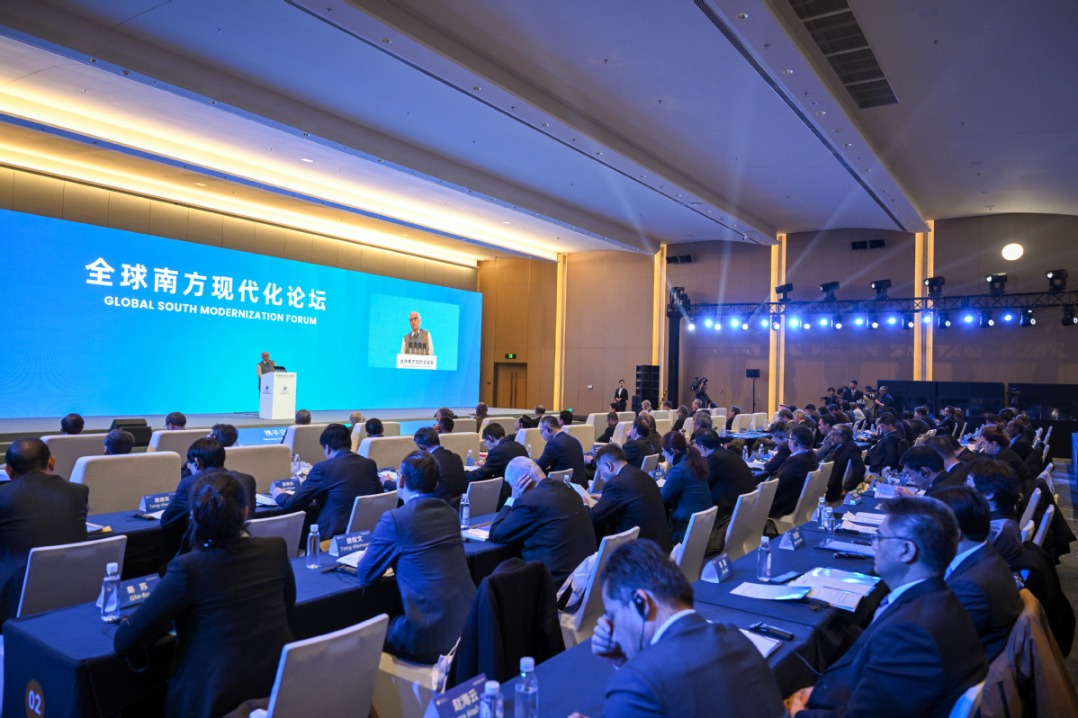Shift to proactive debt-risk management

In the past month since the top legislator approved a resolution on Nov 8 to increase local government debt limits for swapping hidden liabilities, several provinces have recently adjusted their budgets intensively. This move, part of the nation's broader debt management strategy, is a direct and powerful response to financial pressures at the local level.
First, a new 6-trillion-yuan ($825.28 billion) special debt-reduction quota has been allocated for the years 2024 to 2026, with 2 trillion yuan set for each year to help the local governments settle their hidden liabilities. Second, the restrictions on the use of special-purpose bonds have been relaxed, with 800 billion yuan a year allocated from 2024 to 2028. These funds will boost local governments' financial capacity, which will help them to focus on debt resolution and settling up to 4 trillion yuan in hidden liabilities. And third, 2 trillion yuan of hidden debt related to urban renewal projects maturing in 2029 and later will continue to be repaid according to their original contracts.
Since 2015, China has carried out four rounds of debt swaps. The first (2015-18) involved swapping 12.2 trillion yuan of non-government bond liabilities. The second (2019-2021) targeted restructuring debts at the county level in several provinces including Guizhou and Hunan, issuing 157.9 billion yuan in local swap bonds and 612.8 billion yuan in special refinancing bonds including Liaoning. The third (2021-22) focused on clearing implicit debts in key regions such as Beijing, Shanghai, and Guangdong province, leading to the issuance of 453.9 billion yuan in special refinancing bonds. And the fourth (2023-24) introduced special refinancing and targeted bonds amounting to 2.76 trillion yuan.
But compared with the earlier efforts, the latest initiative is unprecedented in scale, timeframe and scope, marking a milestone in China's debt management strategy.
This initiative authorizes 10 trillion yuan exclusively through special bonds, reaffirming local governments as the primary agents of debt resolution. It also reflects a fundamental shift in approach — from reactive crisis management to proactive, systemic resolution. The focus, along with localized interventions, is on comprehensive risk mitigation, and transition from dual-track oversight of explicit and implicit debts to transparent and standardized management of all debts, while balancing risk management and promoting economic growth.
The debt management package is expected to yield tangible benefits, easing the financial burden of local governments and revitalizing economic development. And the total hidden debt at the local level is expected to decrease from 14.3 trillion yuan to 2.3 trillion yuan by 2028, with the average annual debt servicing burden likely to drop from 2.86 trillion yuan to 460 billion yuan, or 80 percent less.
This will save about 600 billion yuan in interest payments over five years, freeing up fiscal resources for economic development and public services. With reduced debt pressure, local governments can refocus on long-term growth strategies, including improving livelihoods, fostering innovation and stimulating consumption.
Besides, the initiative underscores the government's commitment to maintaining financial transparency and stability. And implicit debt levels have been officially quantified for the first time, reflecting progress in fiscal accountability. Such transparency is key to stabilizing market expectations and reinforcing investor confidence.
Moreover, the relief package addresses long-standing liquidity issues that have constrained local governments. Factors such as the COVID-19 pandemic and a downturn in the real estate market have exacerbated payment delays to businesses. With debt pressures easing, financial flows to upstream and downstream enterprises are likely to improve, rejuvenating market activity and restoring corporate vitality.
While the debt swap initiative significantly lowers risks, it does not altogether eliminate them. The transformation of implicit debt into explicit liabilities underscores the need for systemic reforms in debt management.
There is a need therefore to establish a comprehensive oversight of local government debt, including improving risk monitoring, more strictly controlling new borrowing, and aligning debt levels with economic growth rates. This is important because a robust system of debt budgeting and capital allocation will ensure sustainable financial management.
Also, local government financing vehicles should transition toward market-driven and standardized operations, while reforms should include optimizing governance structures, promoting innovation, integrating regional resources and attracting private capital to enhance competitiveness and efficiency.
It is also essential to delineate the responsibilities of governments and markets, ensuring that public resources are allocated effectively. This involves refining performance evaluation systems and fiscal assessment mechanisms, and making efforts to accelerate reforms in restructuring central-local fiscal relations, including shifting some expenditure responsibilities to the central and provincial-level governments to ease the financial burden on local governments.
The author is a researcher at Bank of China.
The views don't necessarily represent those of China Daily.

Today's Top News
- China, US hold maritime safety talks in Hawaii as Beijing reiterates warnings on sovereignty
- China sends letter to UN over Japanese PM's remarks on Taiwan
- Chinese, Uzbek FMs hold second strategic dialogue
- G20 an opportunity to strengthen Sino-EU ties
- China, Africa foster shared food security
- Japan urged to take practical steps to honor its commitments to China






























